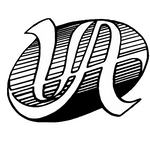
Grey Coats & Cold Steel by Larry Selman
Image Area: 23 X16
Artist Proof Edition of 100 Signed and Numbered
Publisher Proof Edition of 100 Signed and Numbered
CGSC Class 2014 Edition of 700 - SOLD OUT
At the start of the War in 1812, the American army was very small. It lacked good field commanders and was made up of properly trained soldiers. The British were the premier military force in the world at the time, only rivaled by Napoleon's French army. At Buffalo, New York, General Winfield Scott instituted a major training program. Scott drilled his troops for ten hours every day, using the French Army Manual of 1791. Prior to this, various American regiments had been using a variety of different manuals, making it difficult to maneuver any large American force. He insisted on proper camp discipline including sanitary arrangements. This reduced the wastage from dysentery and other enteric diseases which had been heavy in previous campaigns. He also removed or replaced politically appointed officers with ones of merit. Before the invasion of Canada in 1814, General Scott had been unable to obtain enough regulation blue uniforms for his men. Although they had been manufactured and sent to the northern theater, they had been diverted to Plattsburgh and Sackets Harbor. The United States Army's Commissary General, Callender Irvine, hastily ordered 2,000 uniforms to be made and dispatched to Buffalo for Scott's other units. However, because there was insufficient blue cloth, short jackets of grey cloth were used instead. Scotts Brigade was preparing for a belated Independence Day celebration on the afternoon of July 5. He had acquired a special meal for his men "with many extras" and would march them into the open plain to his front for a parade and of course, drill. As Scott was moving his men into the open field, General Brown, his commanding officer, rode up and proclaimed to Scott, "You will have a battle!” Scott was heard to say to his men, "Let us make a new anniversary for ourselves!" British General Riall, seeing the approaching enemy, made a miscalculation. He believed his advisors and scouts earlier in the day when he was told that Ft. Erie was still being defended by the British and the men in his front must be some sort of militia. He advanced his men forward believing he would have an easy time. Riall stated, "Oh they are a set of cowardly untrained men-scrape gallows or state prison men who will not stand the bayonet". Around 4:00 p.m. the battle began on the flat open ground next to the Niagara River with the 9th and 22nd Regiments commanded by Major Henry Leavenworth in the center of the American line, which stretched nearly 1200 feet in length. To his immediate front were the British 100th Foot, some 460 men. The two armies drew to a distance of 200 feet apart, "within grinning distance" as one soldier recalled, and began firing. The American Springfield muskets with their .69 caliber rounds struck down a number of the King's soldiers. A short time after the start of the action, Scott ordered his left flank to turn in on the advancing British. The 25th US on the left drove into the British while the 11th US pushed from the right. After 30 minutes of intense fighting General Riall ordered his forces to retreat. For the first time in the war, regular troops from both sides met in open-field combat and the first such clash was won by the American forces. One captured British officer stated, "We had never seen those grey jackets before and supposed it was only militia-men. It became clear enough we had something besides militia-men to deal with.”
